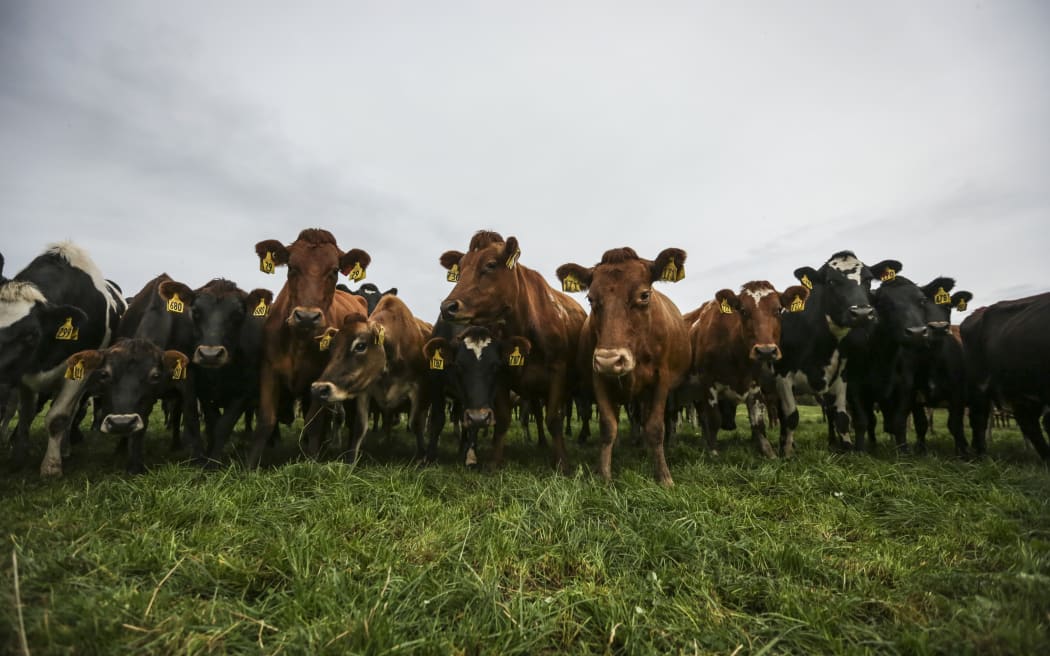
Dairy exports are expected to drop 7 percent and red meat exports are forecast to be down 5 percent. Photo: RNZ / Rebekah Parsons-King
New Zealand's food and fibre exports are forecast to dip this year mainly due to softer demand and weaker prices for dairy and red meat.
The Ministry for Primary Industries Situation and Outlook for Primary Industries Report forecasts exports for the year to June 2024 to be $54.3 billion, down from $57.4b.
The report highlights the issues the primary industries are facing with most sectors expected to see a decline in export revenue.
Dairy exports are expected to drop 7 percent to $24.1b due to softer global dairy prices and a decline in domestic milk production.
Red meat exports are forecast to be down 5 percent because of weaker demand in key markets like China.
Despite wine and cherry exports forecast to grow, overall horticulture exports are expected to drop one per cent to $7b.
And weaker prices for logs and a less favourable 2023/34 outlook for pulp and paper have forestry exports forecast to fall nine per cent to $5.8b.
But the seafood and arable sectors are performing well with exports forecast to rise.
Seafood exports are forecast to increase 8 percent to $2.3b as export prices remain high thanks to the combination of strong demand for product and tight supply.
While arable is forecast to rise 7 percent to $290 million thanks to increased prices for vegetable seed and increased volumes of clover seed.
Minister of Agriculture Todd McClay said while exports were forecast to drop, the mid-to-long forecasts remain strong, with export revenue forecast to build to a record $57.7b in the year to 30 June 2025.
"It's been a tough few years for New Zealand's food and fibre businesses. High domestic inflation rates, high-interest rates, workforce shortages, adverse weather events, increasing business input costs, combined with geopolitical tensions and supply chain challenges, have put continued pressure on the sector."
McClay said the government had set an ambitious target to double the value of exports in 10 years.
"We'll do this by pursuing quality trade agreements, conducting a record number of trade missions to open doors for New Zealand exporters and making India a strategic priority for increased trade and investment," he said.
"We will work tirelessly to promote New Zealand exports and dismantle trade barriers that make it difficult for our food and fibre exporters to sell their high-quality produce overseas.
"To grow New Zealand's exports and continue providing vital food and fibre here at home, we need the right settings, tools, and support."
He said the government was committed to ensuring farming regulations were less costly and bureaucratic, while protecting the environment, as domestic and overseas consumers expected.





